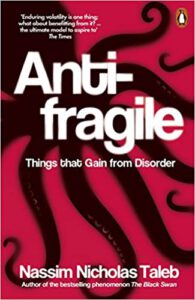There is nothing more practical than a good theory.
So what makes all this theoretical knowledge so practical? Before we FINALLY talk about it, some important background information on how systems can be distinguished. What types of systems are there?
Simple – Complicated – Complex – Chaotic
- In the second part of this little series I already talked about simple, complicated and complex systems. They differ in how their cause-effect relationships are organised.
Static – Dynamic
- Static systems are simple, inflexible units: Once installed, they do not change. An example would be simple input-X-output-Y machines (e.g. coffee machine).
- Dynamic systems are changing, flexible units. They are capable of transformation. Sometimes due to internal drive, sometimes due to external impulses. Examples of ultra dynamic systems are weather phenomena.
Dead – Alive/Learning – Non-learning (dumb)
- Living systems tend to be dynamic systems. Namely, those that develop a certain self-preservation or even growth dynamic on their own.
- Dead systems, on the other hand, perform only those operations that are inherent to them. Nothing else.
- In this respect, one can also speak of learning and non-learning, so to speak dumb systems.
For me, the most helpful distinction is between FRAGILE and ANTIFRAGILE (Nassim Taleb).
Fragile – Antifragile
- Fragile
- Static systems that do not evolve or (cannot) learn are fragile. Because of their lack of flexibility, they are always at risk of being damaged by shocks or impulses from inside or outside.
- So they must either be protected from this by external help. Or they must be built ultra-stable or equipped in such a way that internal or external impulses cannot harm them.
- Both is often difficult and expensive. (And it often distracts from the actual intention.)
- As an example of a fragile system, Taleb uses a porcelain cup that is put into shock-proof packaging for transport.
- Antifragile
- Antifragile systems, in absolute contrast, are dynamic and learning – on their own.
- “Stressful” shocks therefore not only do not bother them (unlike the porcelain cup). Antifragile systems even become better, more intelligent, smarter and also more sustainable as a result.
- Examples: All living and learning organisms (to a certain degree). Or also open, learning, evolving systems of thought.
So how does all this help me in my work? Check out the next and then last part of the series (cliffhanger).
 What else Comes to My Mind
What else Comes to My Mind
- Nassim Nicholas Taleb – Wikipedia
- Nassim Taleb’s books
- Taleb, Nassim Nicholas: Antifragile: Things that Gain from Disorder.
- Taleb, Nassim Nicholas: The Black Swan: The Impact of the Highly Improbable: The Impact of the Highly Improbable
- Appelo, Jurgen: How to Change the World. Change Management 3.0.
- Snowden, Dave: Cynefin – Weaving Sense-Making Into the Fabric of Our World.